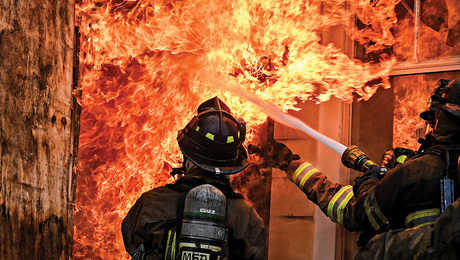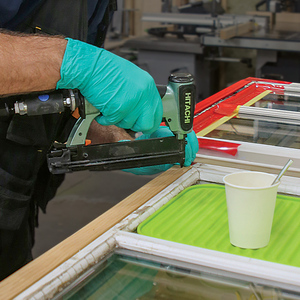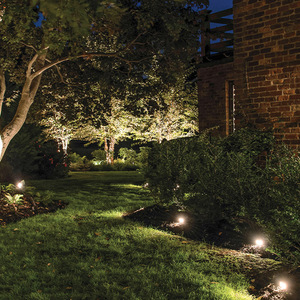I’m doing an interesting job where we’re changing the gutter system on a Mansard roofed Victorian from the built-in gutters which are shot, to a sloped system which will drain into ogee-style aluminum gutters. From the ground you won’t be able to see much difference but in order to flash the small, sloped projection from the house I was going to use a two-piece copper arrangement with the lower copper flashing having an integral drip-edge.
From that the water will flow into the aluminum gutter. The copper flashing/drip edge will not be touching the aluminum gutter.
I’ve heard that water can pick up sulfites from the copper causing premature corrosion of the aluminum even though the two dissimilar metals aren’t touching. Does that sound plausible?
Sorry, I have to run now. I’ll check back tomorrow. Thanks.



















Replies
From what I understand, they have to be touching.
~ Ted W ~
Cheap Tools! - MyToolbox.net
Meet me at House & Builder!
Aluminum gutter stock is anodized.
Anodizing, or anodising, is an electrolytic passivation process used to increase the thickness of the natural oxide layer on the surface of metal parts. Anodizing increases corrosion resistance and wear resistance, and provides better adhesion for paint primers and glues than bare metal. Anodic films can also be used for a number of cosmetic effects, either with thick porous coatings that can absorb dyes or with thin transparent coatings that add interference effects to reflected light. Anodizing is also used to prevent galling of threaded components and to make dielectric films for electrolytic capacitors. Anodic films are most commonly applied to protect aluminium alloys, although processes also exist for titanium, zinc, magnesium, and niobium.
There might be a problem if raw aluminum was used, but there will be little degradation if any on anodized gutters. We've done copper roofs over alum gutters many times (often we'll replace the roof, but the gutter system is relatively new, so we'll leave it 'til it fails - haven't seen any failure yet).
http://www.quittintime.com/ View Image
Your tag/weblink is just a red x here.Spheramid Enterprises Architectural Woodworks
Repairs, Remodeling, Restorations
"If Brains was lard, you couldn't grease much of a pan"Jed Clampitt
View Image
Hmmm. I didn't change anything.
Anybody else seeing the link?http://www.quittintime.com/ View Image
I can see it.
thankshttp://www.quittintime.com/ View Image
i can see it . . . . but it may be due to the 4th cuo of coffee
From that the water will flow into the aluminum gutter. The copper flashing/drip edge will not be touching the aluminum gutter.
If there is rain flow between the copper and aluminum, that will likely provide sufficient conductivity to erode the metals. Essentially, it forms a battery and consumes the metals.
Essentially, it forms a battery and consumes the metals.
If it were raw aluminum, you'd be right. There would be corrosion, although not as great as copper to galvanized. But it's not raw aluminum.http://www.quittintime.com/ View Image
If it were raw aluminum, you'd be right.
I assume you are referring to the anodization, which decreases surface electron activity but does not completely eliminate it. Generally, even if the original anodizing is defect-free and the aluminum is not cut or otherwise processed in a way that exposes an untreated area, in practice dents, dings, etc. will fairly quickly expose the unprocessed aluminum somewhere. The corrosion will start there and spread, sort of like a cancer.;-)
You're correct on paper, but I've seen this done many times and experience says while it may not be a perfectly ideal situation, it's also not the bugaboo you're trying to make it out to be.
Just for test lab purposes, I used some raw aluminum hidden hangers on my personal copper gutters. I don't see any sign of deterioration after 4 years. I'm kind of surprised.http://www.quittintime.com/ View Image
I found this little tidbit buried in the fine print of the Certainteed shingle warranty:
WARNING: FOR LOW-VOLUME RAIN AND SALT FOG AREAS
In areas of low-volume rain (e.g. areas that receive insignificant rainfall during a 90-day period) and/or “salt
fog” (e.g. parts of the Southern California coastline), copper released by algae-resistant (AR) granules or
shingles can react with aluminum in gutters and cause severe corrosion of the gutters. In such regions,
CertainTeed strongly recommends that vinyl or copper gutters, not aluminum gutters, be used with algae-resistant
shingles. CertainTeed disclaims all liability and responsibility for any damages that may result from
the use of its algae-resistant shingle products with copper granules where gutters containing
aluminum are used.